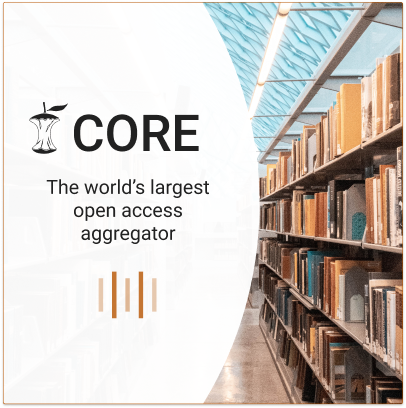50 research outputs found
The primate-specific peptide Y-P30 regulates morphological maturation of neocortical dendritic spines
 Get PDF
Get PDFThe 30-amino acid peptide Y-P30 corresponds to the N-terminus of the primate-specific, sweat gland-derived dermcidin prepropeptide. Previous work has revealed that Y-P30 enhances the interaction of pleiotrophin and syndecans-2/3, and thus represents a natural ligand to study this signaling pathway. In immature neurons, Y-P30 activates the c-Src and p42/44 ERK kinase pathway, increases the amount of F-actin in axonal growth cones, and promotes neuronal survival, cell migration and axonal elongation. The action of Y-P30 on axonal growth requires syndecan-3 and heparan sulfate side chains. Whether Y-P30 has the potential to influence dendrites and dendritic protrusions has not been explored. The latter is suggested by the observations that syndecan-2 expression increases during postnatal development, that syndecan-2 becomes enriched in dendritic spines, and that overexpression of syndecan-2 in immature neurons results in a premature morphological maturation of dendritic spines. Here, analysing rat cortical pyramidal and non-pyramidal neurons in organotypic cultures, we show that Y-P30 does not alter the development of the dendritic arborization patterns. However, Y-P30 treatment decreases the density of apical, but not basal dendritic protrusions at the expense of the filopodia. Analysis of spine morphology revealed an unchanged mushroom/stubby-to-thin spine ratio and a shortening of the longest decile of dendritic protrusions. Whole-cell recordings from cortical principal neurons in dissociated cultures grown in the presence of Y-P30 demonstrated a decrease in the frequency of glutamatergic mEPSCs. Despite these differences in protrusion morphology and synaptic transmission, the latter likely attributable to presynaptic effects, calcium event rate and amplitude recorded in pyramidal neurons in organotypic cultures were not altered by Y-P30 treatment. Together, our data suggest that Y-P30 has the capacity to decelerate spinogenesis and to promote morphological, but not synaptic, maturation of dendritic protrusions.Peer reviewe
Interstitial transudate concentration of adenosine and inosine in rat and guinea pig hearts
 No full text
No full textLocal multi-modal image matching based on self-similarity
 No full text
No full textA fundamental problem in computer vision is the precise determination of correspondences between pairs of images. Many methods have been proposed which work very well for image data from one modality. However, with the wide availability of sensor systems with different spectral sensitivities there is growing demand to automatically fuse the information from multiple sensor types. We focus on the problem of finding point and local region correspondences in an inter-modality imaging setup. We use a Generalized Hough Transform to determine small regions with a similar geometric relationship of local image features to robustly identify correct matches. We additionally optimize region correspondences by a fast non-linear optimization of a self-similarity distance measure. This measure outperforms standard multi-modal registration approaches like mutual information or correlation ratio in case of local image regions. The method is evaluated on Visible/Infrared (IR) and Visible/Light Detection and Ranging (LiDAR) intensity image data pairs and shows very promising results. Potential applications are numerous and include for instance multi-spectral camera calibration, multi-spectral texturing of 3D-models, multi-spectral segmentation or multi-spectral super-resolution
Local multi-modal image matching based on self-similarity
 No full text
No full textABSTRACT A fundamental problem in computer vision is the precise determination of correspondences between pairs of images. Many methods have been proposed which work very well for image data from one modality. However, with the wide availability of sensor systems with different spectral sensitivities there is growing demand to automatically fuse the information from multiple sensor types. We focus on the problem of finding point and local region correspondences in an inter-modality imaging setup. We use a Generalized Hough Transform to determine small regions with a similar geometric relationship of local image features to robustly identify correct matches. We additionally optimize region correspondences by a fast non-linear optimization of a self-similarity distance measure. This measure outperforms standard multi-modal registration approaches like mutual information or correlation ratio in case of local image regions. The method is evaluated on Visible/Infrared (IR) and Visible/Light Detection and Ranging (LiDAR) intensity image data pairs and shows very promising results. Potential applications are numerous and include for instance multi-spectral camera calibration, multi-spectral texturing of 3D-models, multi-spectral segmentation or multi-spectral super-resolution
The contribution of white and gray matter differences to developmental dyslexia: Insights from DTI and VBM at 3.0T
 No full text
No full textCROSS-TALK OF CORTICOTROPIN RELEASING HORMONE RECEPTOR SUBTYPE 1 WITH DOPAMINE D1 RECEPTOR: FUNCTIONAL RELEVANCE IN ALCOHOL DEPENDENCE
 No full text
No full textTemporal profile and significance of metabolic failure and trophic changes in the canine cerebral arteries during chronic vasospasm after subarachnoid hemorrhage
 No full text
No full textDifferent regional brain volume loss in pure and complicated hereditary spastic paraparesis: A voxel‐based morphometric study
 No full text
No full text
